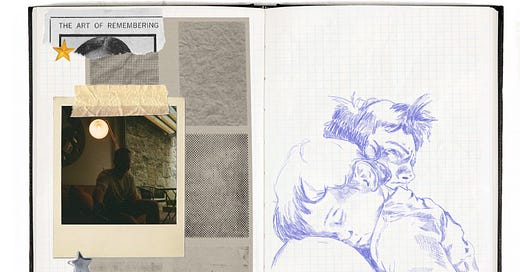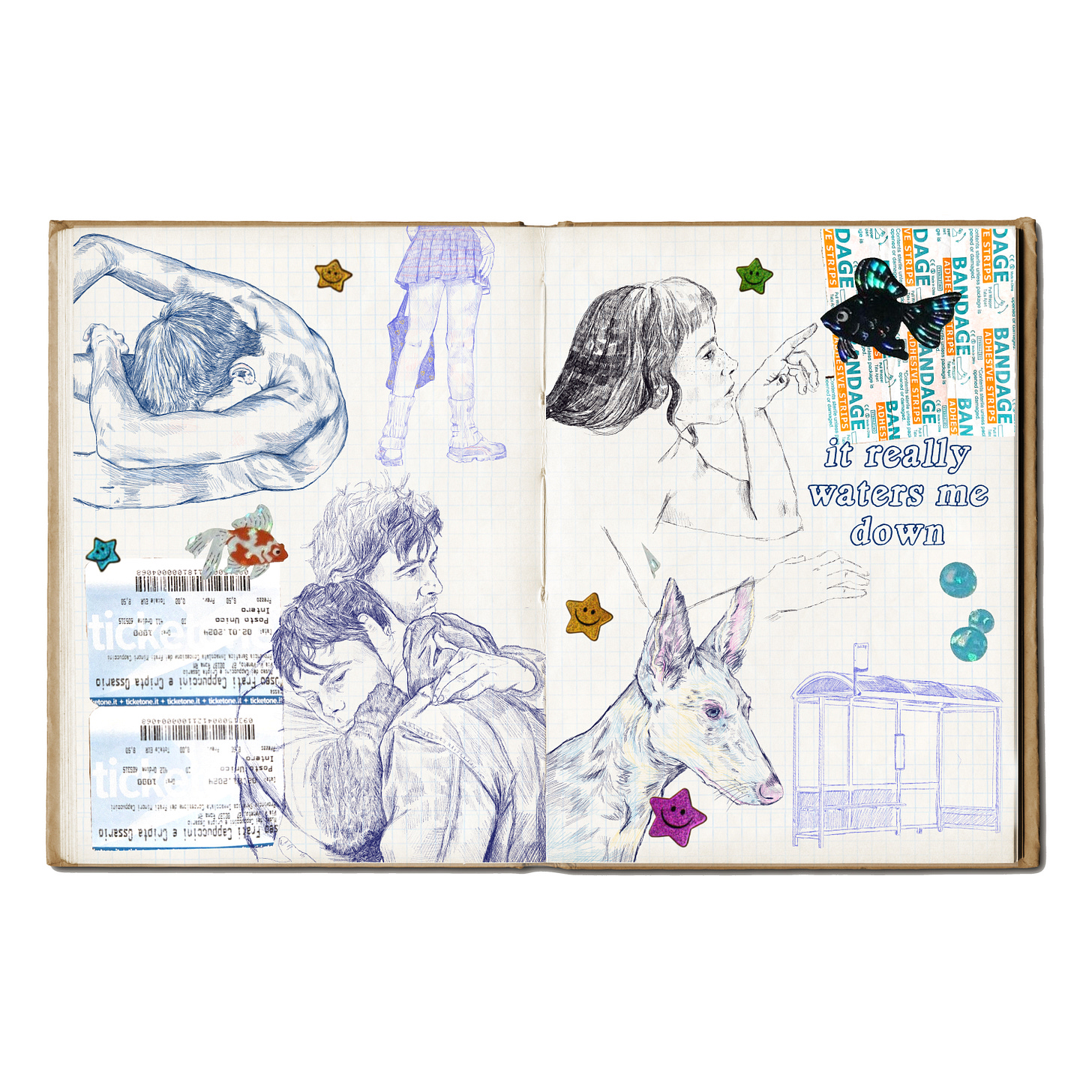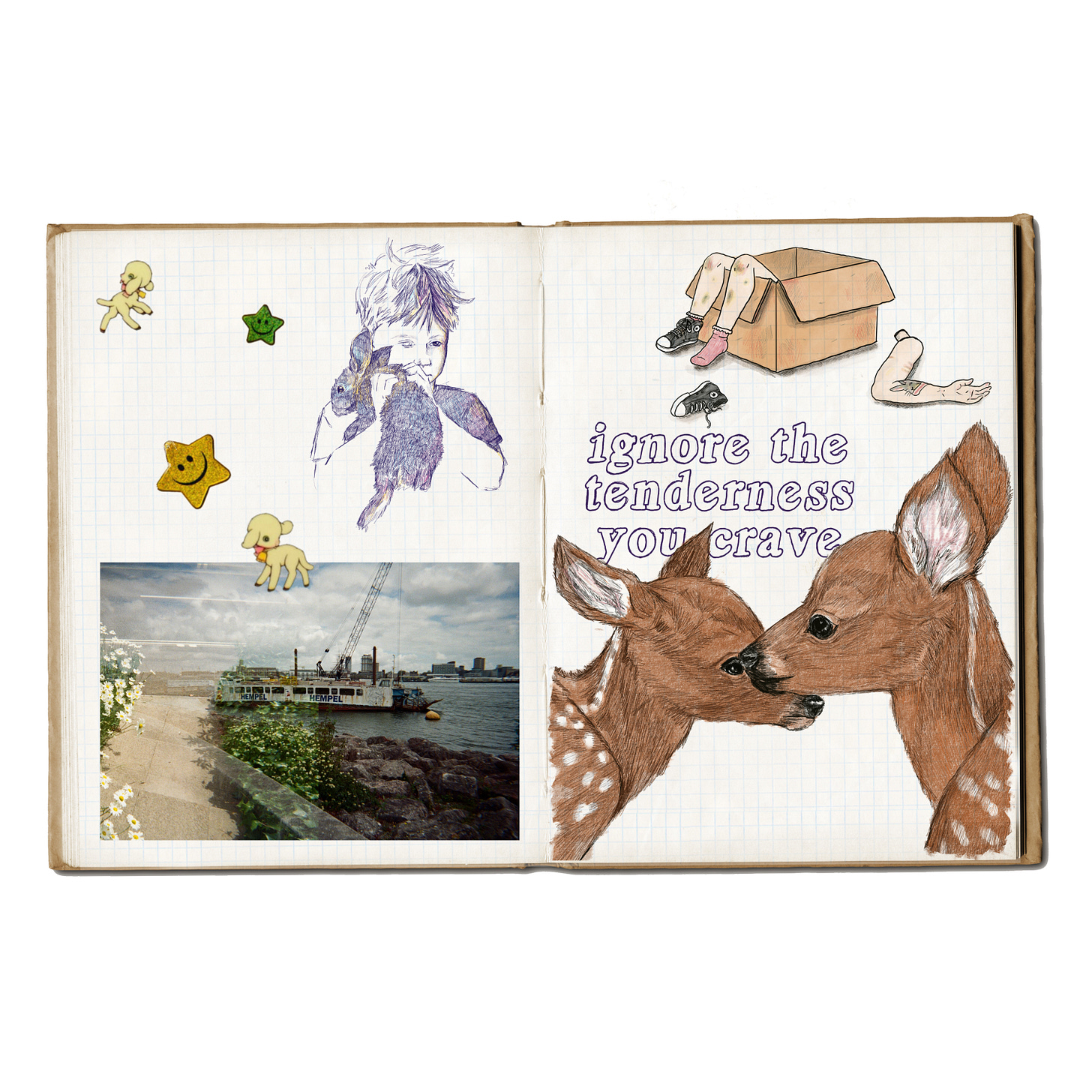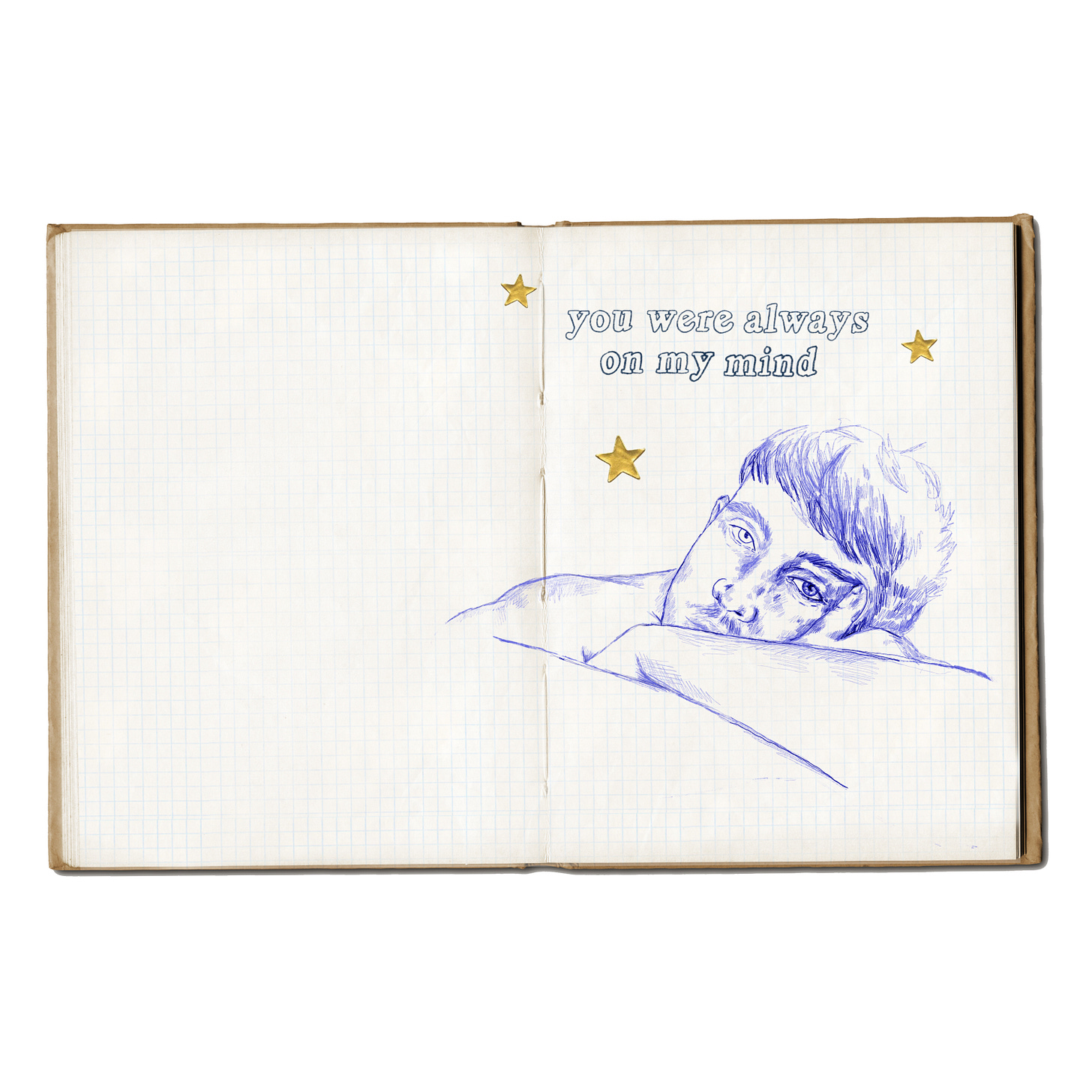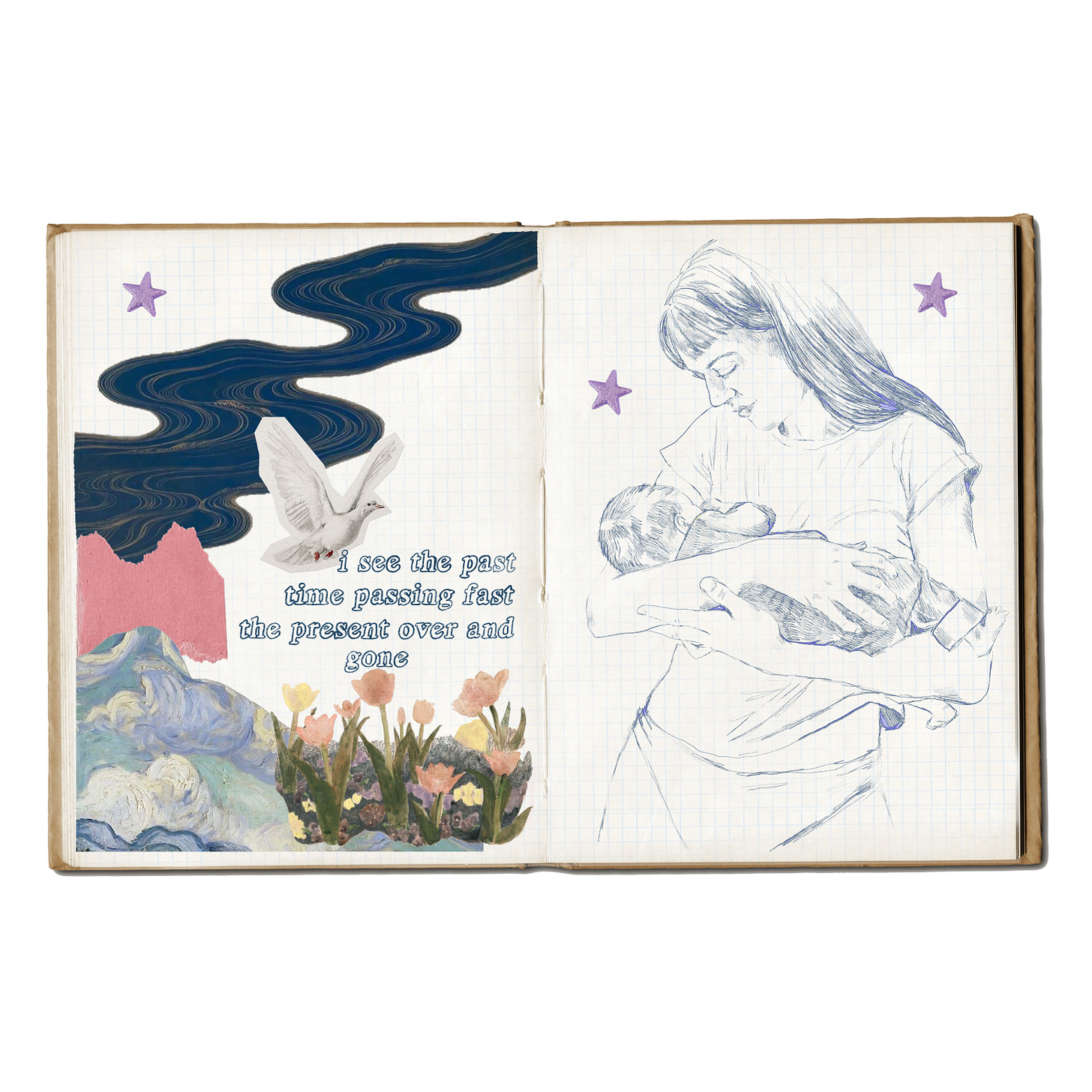Paper Memories: The Art of Unfinished Thoughts
Exploring vulnerability through layers of illustrations, artefacts, and the fragments of everyday life that shape our memories.
There's something intimate about opening a journal. The grid-lined pages of my sketchbook have become a canvas where memory and imagination meet, where the ephemera of daily life transforms into something more meaningful through intentional arrangement and careful illustration.
The Poetry of Unfinished Lines
My illustration process has evolved into a deliberate practice of incompleteness. I allow my blue ballpoint pen sketches to fade into the paper, some areas rendered with careful detail, others merely suggested with the lightest of lines. This technique isn't about laziness or impatience, but rather reflects how memory itself works, some moments vivid and sharp, others soft around the edges, disappearing into the background of our consciousness.
The faces I draw often gaze directly at the viewer or look away in quiet contemplation. They exist in a state of emotional vulnerability a child holding a rabbit, a mother cradling an infant, two figures embracing. Each portrait captures a moment of tenderness that contrasts with phrases like "ignore the tenderness you crave" or "it really waters me down" creating a tension between what we feel and what we allow ourselves to express.
The Archaeology of Everyday Objects
Scattered throughout these pages are the artifacts of daily existence, a photograph of the Hempel ferry from my sailing trip, ticket stubs, receipts, plasters. By scanning these objects and incorporating them into my compositions, I'm creating a form of personal archaeology. Each item carries its own history, its own memory.
The ferry photograph in particular stands as a bridge between my two creative projects—the double exposures of Gosport and these journal collages. Both explore how memories layer upon one another, how past and present coexist in the same space. In one medium it happens through film, in the other through digital collage, but the emotional resonance remains consistent.
Stars as Anchors
The colorful star stickers appear throughout the journal pages like bright punctuation marks or celestial bodies. They create visual rhythm and offer moments of childlike joy amidst the more contemplative elements. There's something deliberately naive about using stickers, a reminder of childhood scrapbooks and early artistic expressions, that contrasts with the more sophisticated pen illustrations and digital techniques.
These stars serve as anchors, drawing the eye across the composition while connecting disparate elements. They're the simplest components in these complex collages, yet they hold surprising emotional weight.
Fragments of Language
"You were always on my mind" "I see the past time passing fast the present over and gone" "Ignore the tenderness you crave"
These textual fragments function as emotional waypoints throughout the journal. Some are borrowed from songs that shaped my understanding of certain feelings, others are personal observations. They're intentionally incomplete thoughts, like the illustrations themselves, creating space for the viewer to bring their own interpretations.
The typography, rendered in a simple outlined style, floats above the other elements, neither fully integrated nor entirely separate. Words become another layer in the archaeology of memory, another artifact preserved between these pages.
The Digital and the Tangible
There's a fascinating tension in the process of creating these pieces. What begins as physical, paper, pen, stickers, found objects, becomes digital through scanning. The tactile is transformed into the intangible. Yet the final images maintain traces of their physical origins: the texture of grid paper, the slight shadows where stickers meet the page, the worn edges of photographs.
This transformation mirrors how memories themselves evolve: from immediate sensory experiences into something more processed, edited, and reconstructed. The digital manipulation allows for layering creating depths and transparencies that echo how memories overlay one another in our minds.
Time as a Presence
Perhaps most significantly, these journal pages explore our relationship with time. The box with dismembered doll parts speaks to childhood's end. The mother and infant capture a fleeting moment that passes too quickly. The embracing figures hold onto each other against time's constant forward motion.
"I see the past time passing fast the present over and gone" may be the most direct reference, but every element, from the aging ferry photograph to the ephemeral nature of ticket stubs and receipts, speaks to our attempts to preserve moments that inevitably slip away.
The blue ballpoint pen itself feels significant, the same humble tool used to jot quick notes becomes the instrument for creating these more deliberate meditations on memory. It connects the mundane acts of daily record-keeping with the more profound project of preserving emotional experiences.
In these journal pages, I'm not just documenting life but actively exploring how memory works, how it fades, how it transforms, how it layers upon itself, and inviting viewers to consider their own relationship with the past, with vulnerability, and with the tender moments they might otherwise ignore.


